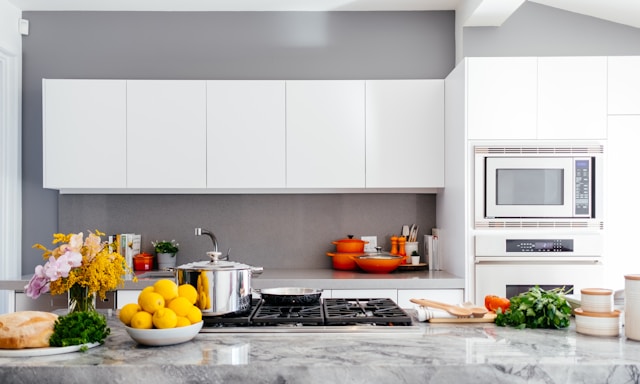Designing Your Dream Kitchen: A Guide to Functional and Stylish Renovations
May 26, 2025Designing a dream kitchen is about more than aesthetics—it’s about creating a space that functions well, reflects your style, and adds value to your home. Start with a clear assessment of your current kitchen, set achievable renovation goals, budget wisely, select quality materials, integrate modern technologies, and partner with skilled professionals. This guide walks you through the essential steps to achieve a beautiful and practical kitchen remodel.

Assessing Your Current Kitchen Layout
Begin by analyzing your kitchen’s existing layout. Measure dimensions carefully—note wall lengths, window placements, ceiling height, and floor space. Identify potential obstacles such as load-bearing walls and utility lines. Take stock of existing elements you’d like to keep or update, such as cabinetry, plumbing, or lighting. This foundational step ensures your remodel starts with a realistic understanding of spatial constraints and design opportunities.
Evaluate traffic flow and common kitchen activity zones: food prep, cooking, and cleaning. An efficient kitchen design maximizes functionality by ensuring these areas are logically arranged, often in a work triangle configuration. Consider how your current kitchen falls short and where improvements can streamline your daily use.
Setting Renovation Goals and Budget
Before you dive into selecting countertops or paint colors, clarify what you hope to achieve. Do you need more storage, better lighting, improved ventilation, or a layout that suits family life or entertaining? Define your must-haves and nice-to-haves to guide your decision-making.
Next, develop a practical budget. A typical kitchen renovation can cost between $25,000 and $150,000, depending on scope and quality. Plan to invest between 5–15% of your home’s value. Allocate percentages for key areas:
- Cabinetry: ~30–35%
- Appliances: ~15–20%
- Countertops: ~10–15%
- Labor and Installation: ~20–25%
- Contingency Fund: ~10–15%
Breaking down your budget prevents overspending and allows flexibility when unexpected costs arise.
Choosing Materials and Finishes
Your choice of materials sets the tone for your kitchen’s design and longevity. Cabinet finishes range from budget-friendly laminates to high-end stained or painted woods. Laminate offers durability and modern finishes at a lower cost, while solid wood brings warmth and timeless appeal.
For countertops, consider durable options like quartz, granite, or solid surface materials. These are scratch-resistant, easy to maintain, and available in various styles. Choose flooring that stands up to foot traffic and spills—porcelain tile, luxury vinyl plank, or engineered wood are excellent options.
Incorporate light, neutral finishes to make smaller spaces feel larger and more inviting. Don’t overlook hardware, backsplashes, and lighting fixtures, as these small touches greatly enhance the final design.
Integrating Modern Appliances and Technology
A kitchen is only as functional as the appliances that power it. Today’s smart appliances offer features that boost convenience and efficiency. Consider:
- Smart refrigerators that track groceries and connect to your phone
- WiFi-enabled ovens and ranges that let you preheat remotely
- Dishwashers with adjustable racks and quick-dry cycles
- Induction cooktops for faster, safer cooking
Select ENERGY STAR-rated appliances to reduce energy costs. Many also feature sleek, built-in designs that blend seamlessly with cabinetry, contributing to a clean, contemporary look.
Technological integration goes beyond appliances. Think smart lighting, under-cabinet charging ports, and voice-controlled systems. These features enhance the daily experience of cooking and entertaining.
Hiring the Right Professionals
While some homeowners enjoy DIY projects, a kitchen remodel is best left to experienced professionals—especially when structural, plumbing, or electrical changes are involved. A good contractor or design-build firm can streamline timelines, manage permits, and coordinate trades.
When choosing a partner, verify licenses, insurance, and references. Ask about past projects and request a clear proposal outlining scope, cost, and timeline. Trust and communication are key—this is someone who will be in your home for weeks or months.
For those planning a custom kitchen renovation, this Houston remodeling company offers expert services tailored to your design vision and functional goals.
Conclusion
A successful kitchen renovation starts with thoughtful planning. Assess your space, set realistic goals, and align your budget with your priorities. Choose materials that blend beauty with durability, and embrace technology that makes daily life easier. Most importantly, work with professionals who understand your goals and can deliver results that stand the test of time. With the right approach, your dream kitchen can become the heart of your home—functional, stylish, and truly yours.
